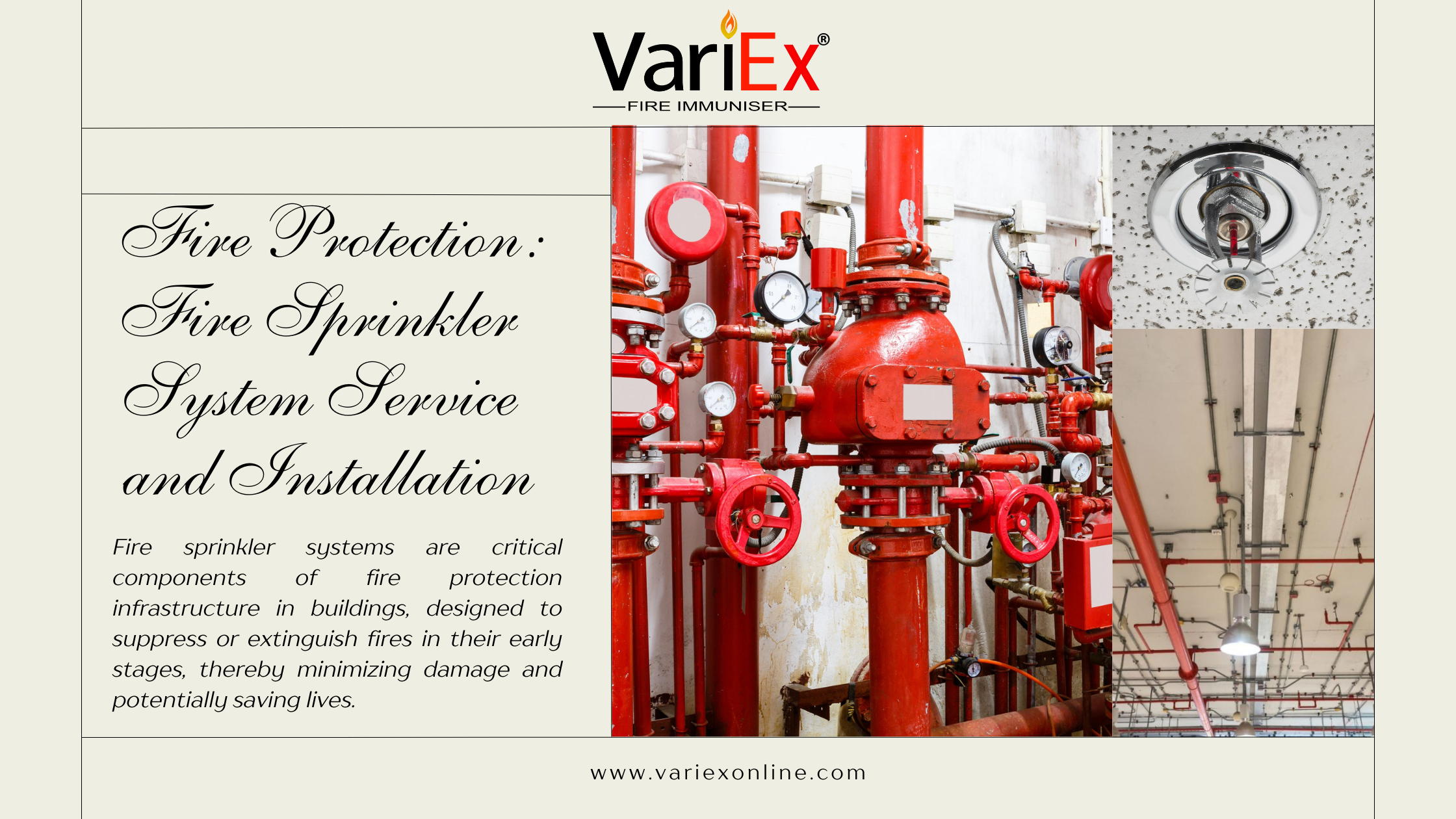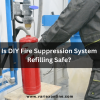![]()
Fire Immuniser
+91-7829629111
Email: info@variex.in
Varistor Technologies Pvt. Ltd.
Block-1, First Floor, Ardente Office One, Hoodi Circle, ITPL Main Road, Bengaluru, Karnataka 560048, IN
Fire Protection: Fire Sprinkler System Service and Installation
Fire sprinkler systems are critical components of fire protection infrastructure in buildings, designed to suppress or extinguish fires in their early stages, thereby minimizing damage and potentially saving lives. Here’s an overview of fire sprinkler systems, their installation process, and the importance of regular servicing.
Fire Sprinkler System Basics
Functionality: Fire sprinkler systems operate automatically upon detecting heat from a fire. They release water or other extinguishing agents directly at the source of the fire, effectively controlling its spread.
Types of Sprinkler Systems:
- Wet Pipe Systems: These are the most common type, where water is constantly present in the pipes, ready to discharge immediately upon activation.
- Dry Pipe Systems: Used in environments where pipes could freeze, dry pipe systems hold pressurized air or nitrogen instead of water. Upon activation, the air releases, allowing water to flow into the pipes and through the sprinklers.
- Pre-action Systems: Combining aspects of wet and dry pipe systems, pre-action systems require two triggers (such as heat and smoke detection) before water is released.
Installation Process
Design and Planning: Installation begins with a detailed assessment of the building’s layout, fire risks, and regulatory requirements. Engineers design the system to ensure comprehensive coverage while minimizing water damage.
Piping Installation: Pipes are strategically placed throughout the building, often hidden above ceilings or within walls. They connect to sprinkler heads that are positioned to maximize coverage and effectiveness.
Sprinkler Head Installation: Different types of sprinkler heads are used depending on the area’s requirements. Heads are spaced according to the National Fire Protection Association (NFPA) standards to ensure adequate coverage.
System Integration: Once installed, the system is integrated with the building’s fire alarm system and, if necessary, connected to a monitoring service for rapid response.
Importance of Service and Maintenance
Regular Inspections: Routine inspections are crucial to ensure all components of the system are functioning correctly. This includes checking pipes for leaks, verifying water pressure, and testing each sprinkler head.
Maintenance Checks: Beyond inspections, maintenance involves periodic testing of the entire system to ensure it activates properly in the event of a fire. This can include flow tests, valve checks, and ensuring backup power sources are operational.
Upgrades and Repairs: Over time, systems may require upgrades to meet evolving fire safety codes or to accommodate changes in building use. Prompt repairs are essential to address any issues identified during inspections.
Compliance and Regulations
Building Codes: Fire sprinkler system installation must comply with local and national building codes and regulations. These codes outline requirements for design, installation, and ongoing maintenance to ensure maximum safety.
Occupancy Requirements: Certain buildings, such as high-rises, hospitals, and warehouses, may have specific requirements for fire protection systems based on occupancy and use.
Conclusion
Fire sprinkler systems are pivotal in safeguarding lives and property against the devastating impact of fires. Proper installation, regular maintenance, and adherence to safety regulations are essential to ensure these systems perform effectively when needed most. By investing in quality installation and ongoing service, building owners and occupants can significantly enhance their fire protection measures.
Frequently Asked Questions
Installing a fire sprinkler system significantly reduces the risk of property damage and protects lives by quickly containing or extinguishing fires before they escalate. It's a proactive measure that enhances overall fire safety.
The type of fire sprinkler system depends on factors such as building layout, occupancy type, and local regulations. Consulting with a fire protection engineer or contractor can help determine the most suitable system for your specific needs.
Fire sprinkler systems should undergo regular inspections as per NFPA standards. Typically, this includes quarterly, semi-annual, and annual inspections conducted by certified professionals to ensure all components are in proper working order.
Maintenance involves periodic testing of the system, including flow tests, valve checks, and ensuring adequate water supply and pressure. Any necessary repairs or upgrades should be promptly addressed to maintain system reliability.
While initial installation costs can vary depending on building size and complexity, ongoing maintenance costs are generally reasonable compared to potential fire damage expenses. Investing in regular maintenance helps ensure the system remains effective and compliant with safety regulations.
Final Say
At VariEx.in and VariexOnline.com, we specialize in supplying and installing top-quality fire fighting systems and equipment. From fire extinguishers to advanced suppression systems, we offer comprehensive solutions tailored to your needs. Our experienced team ensures precise installation and maintenance for optimal safety.
Trust VariEx for reliable fire protection. Contact us online or call 7829629111 to learn more.










